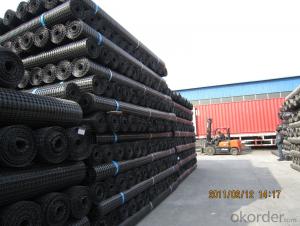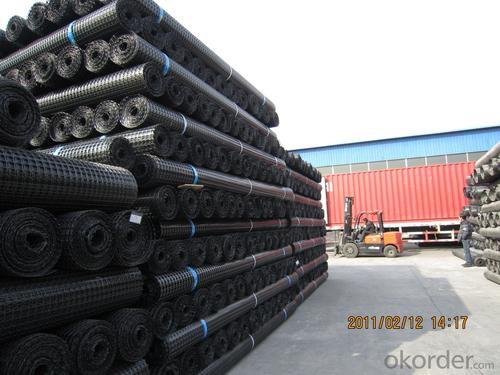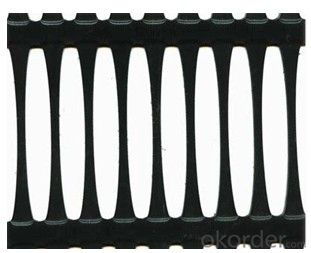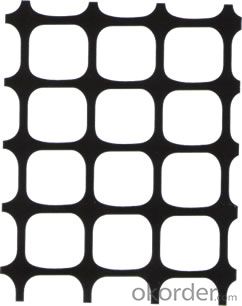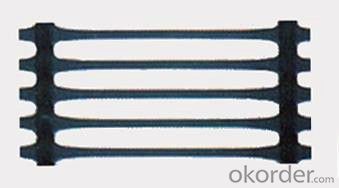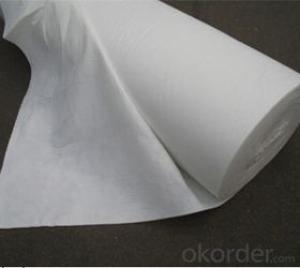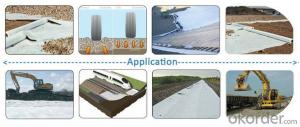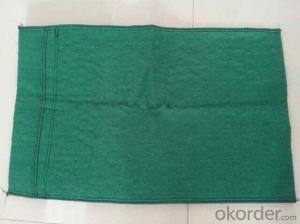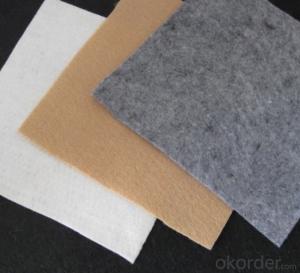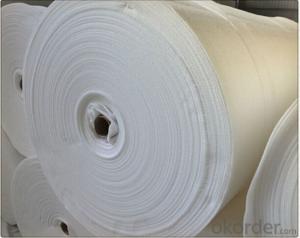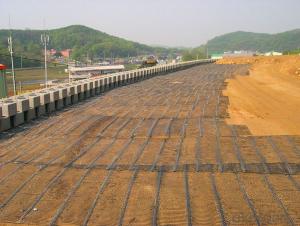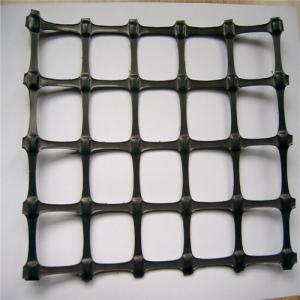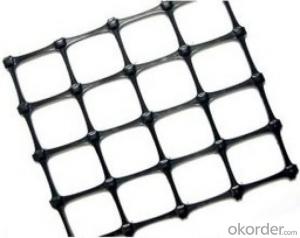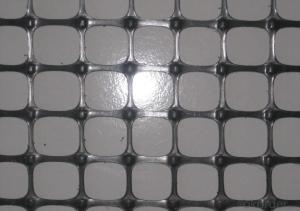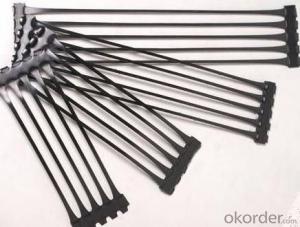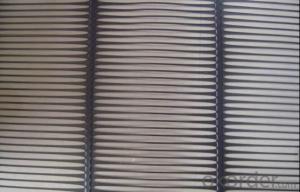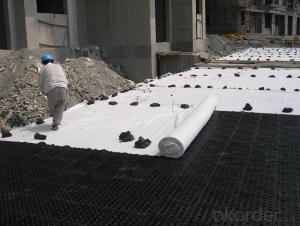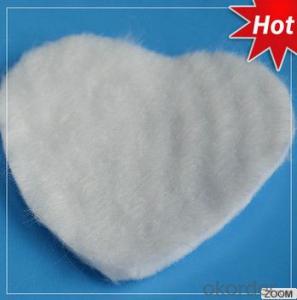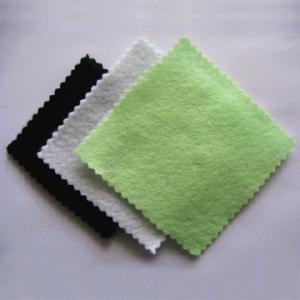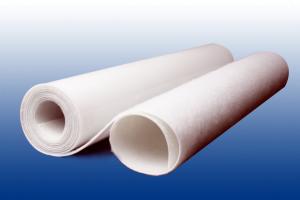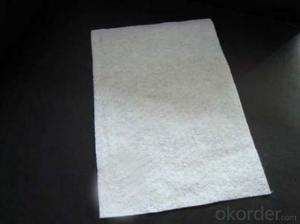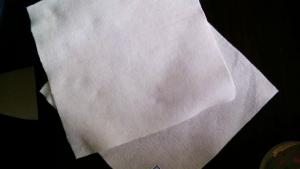Geotextil No Tejido 200 Gr M2 PP HDPE Uniaxial Geogrid Reinforcement with CE
- Loading Port:
- Qingdao
- Payment Terms:
- TT OR LC
- Min Order Qty:
- 10000 m²
- Supply Capability:
- 300000 m²/month
OKorder Service Pledge
OKorder Financial Service
You Might Also Like
Description Of PP HDPE Uniaxial Geogrid Reinforcement:
Uniaxial geogrid is made of high molecular polymer after extruded and laminated and punched into regular mesh before
longitudinal stretching. This process makes high molecule in direct line state in oblong oval net structure with uniform
distribution and high node intensity. This structure has rather high tensile strength and stretch modulus, especially our
products of this kind have superior world class tensile strength and strech modulus with extensibility between 2% and
5%. The soil offers ideal force carrying and diffusing chain system. It has large tensile strength (>150Mpa), and is
suitable for different kinds of soil.
Main Features of PP HDPE Uniaxial Geogrid Reinforcement:
(1)High intension,high tenacity,high occlusive force with soil or gravel,erosion-resistant,water drainage,light weigth.
(2)Reinforce soft soil roadbed,rib side slope of embankment,enhance isolation,inhibit ground deformation,prevent crack by reflection,increase
Specifications of PP HDPE Uniaxial Geogrid Reinforcement:
Type Item | TGDG25 | TGDG35 | TGDG50 | TGDG80 | TGDG110 | TGDG120 | TGDG150 | |
Width(mm) | 1100 | |||||||
Length /roll (m) | 50 | |||||||
Yield strength ≥KN/M | HDPE | 25 | 35 | 50 | 80 | 110 | 120 | 150 |
PP | 25 | 35 | 50 | 80 | 110 | 120 | 150 | |
Elongation | HDPE (%) | 11-16 | ||||||
PP≤ (%) | 10 | |||||||
Strength at 2% elongation ≥KN/M | HDPE | 6 | 9 | 10 | 23 | 30 | 35 | 46 |
PP | 7 | 10 | 12 | 26 | 32 | 38 | 48 | |
Strength at 5% elongation≥KN/m | HDPE | 12 | 18 | 25 | 44 | 60 | 70 | 87 |
PP | 14 | 20 | 28 | 48 | 64 | 75 | 93 | |
Applications of PP HDPE Uniaxial Geogrid Reinforcement:
(1)Roadbed reinforcement of road and railway,crack prevention,increase of roadbed strength;
All kinds of soft foundation reinforcement treatment, enhance improve roadbed subgrade bearing capacity and retaining walls under long-term stress state, steep slope, dam, abutment reinforcement, improve the quality of engineering, extend the life of the project.
1. Uniaxial geogrid is used to reinforce the soft ground:Geogrids can rapidly improve the foundation bearing capacity,control
the development of the settlement,Confining effect of roadbase can effectively load distribution to the wider subbase,Thus
reducing thickness at the grass-roots level, reduce the project cost, shorten the construction period, prolong service life.
2. Uniaxial geogrid is used for reinforced asphalt or cement pavement: Geogrid laying in asphalt or cement layer at the bottom,
Can reduce rut depth, extend the life of the pavement fatigue resistance; Also can reduce the thickness of asphalt or cement
pavement, in order to save costs.
3. Uniaxial geogrid is used for Road embankment and slope reinforcement and retaining wall: Traditional embankment especially
high embankment filling often need to fill in and on the edge of the shoulder is not easy to compaction, leading to slope rainwater
leaching, the collapse instability phenomenon occurs frequently later;Need a slower slope at the same time,large area occupied;
The embankment slope or retaining wall by geogrid reinforcement can reduce the binary one area, prolong service life,
reduce cost 20-50%.
4. Uniaxial geogrid is used to reinforce the river seawall: To make a stone cage, geogridand use again; to prevent the dam caused
by seawater erosion failures. Stone cage has the permeability, can slow waves hit, prolong the life of the levee, save manpower
material resources, shorten the construction period.
5. Uniaxial geogrid is used for landfill: geogrid and other geotechnical material used in combination can effectively solve the
foundation problems such as uneven settlement, derivative gas emissions, and can maximize storage capacity of the landfill.
IMages of PP HDPE Uniaxial Geogrid Reinforcement:

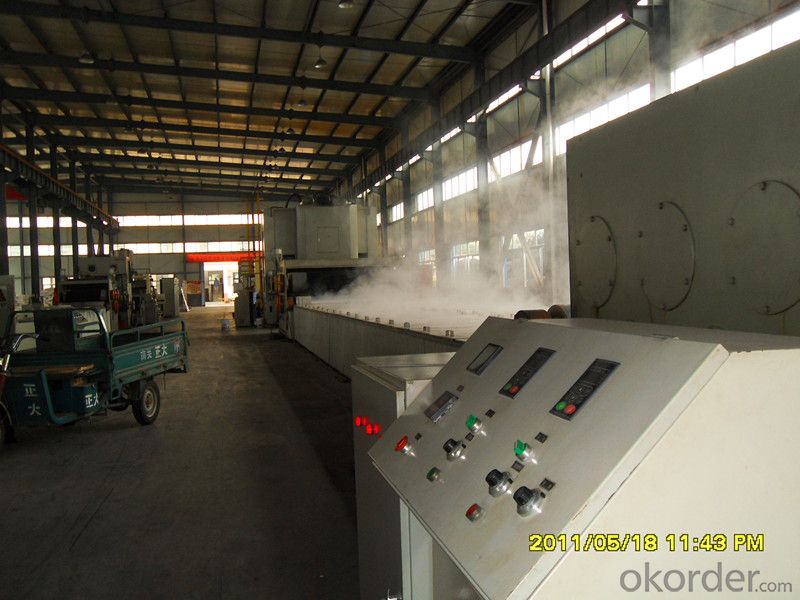
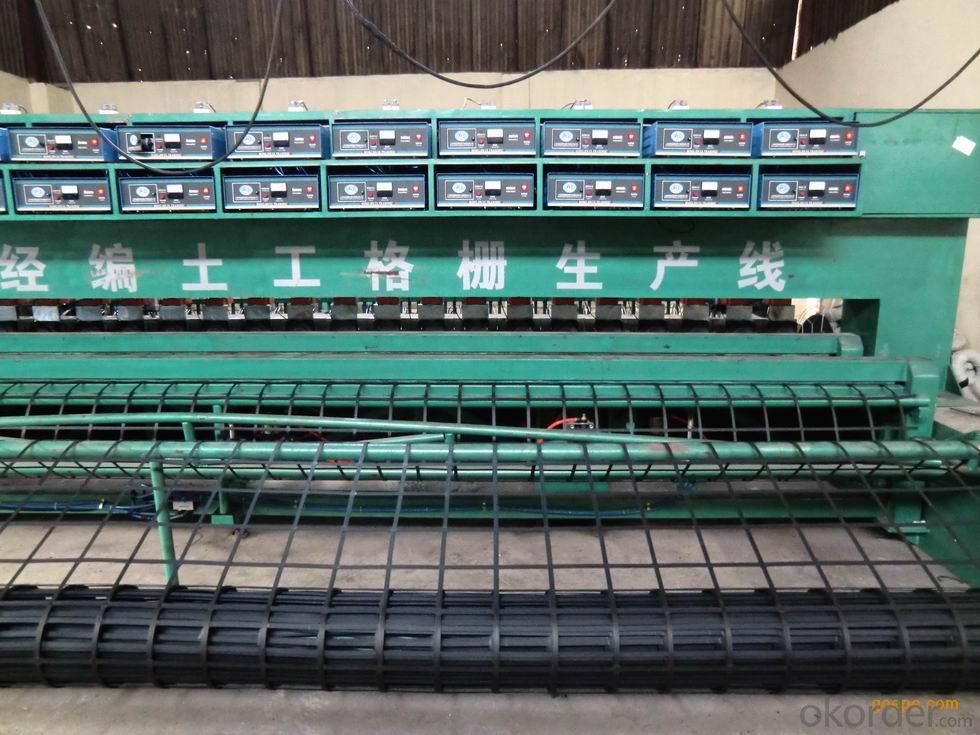
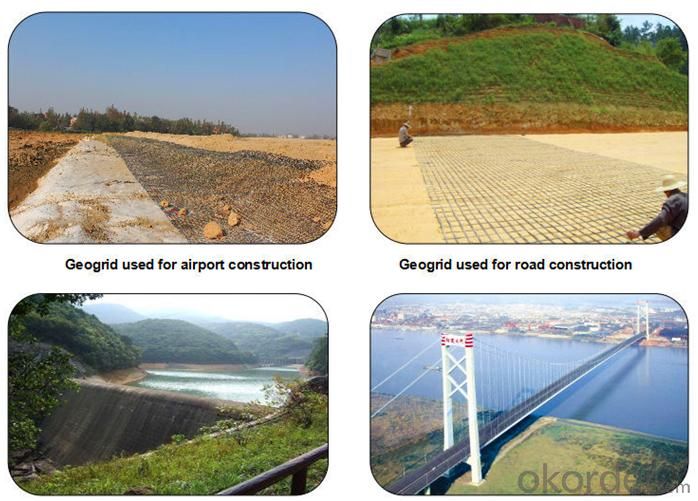
FAQ:
1. Do you supply free samples for customers?
Yes,we will supply free samples for you.Please send your address for us.
2. How Many years experience do you have?
We have been exported to more than 20 countries in the past 15 years.
3. How long do we usually reply your request?
We always reply our customer within 24 hours.
- Q: Is the case, we detect the company now want to engage in expansion (that is, increase the test items), the need for material to do qualification certification. But I have not done before, do not know their own data done unreasonable. Take the data mainly for reference, know the approximate range of the various parameters. Question added: it is best to have data logging source and derivation formula to support the reasonableness of this result, thank you! More
- Hello, can only help you this, do not know useful to you useless factory production geotextile geomembrane drainage board
- Q: A creek next to our property is eating away the embankment and an engineer suggested using the sand in the creek bed.. wrapping it up in geotextile fabric in the form of a burrito but he did mnot mention how to fasten them shut..any ideas or experience with erosion control out there?
- Get some tie wire or baling wire. It's a soft wire used for tying reinforcing steel together or for baling straw. You could also use plastic cable ties.
- Q: Road with a geotextile cloth is a cloth or non-woven fabrics
- Geotextile is a non-woven category, geomembrane is divided into light film, and a cloth a film, two cloth a film, two cloth is a film in the middle of the membrane, both sides of the geotextile composite products. Huazhi geotextile material manufacturers
- Q: Can geotextiles be used in erosion control on riverbanks?
- Yes, geotextiles can be used in erosion control on riverbanks. Geotextiles are permeable fabrics that can be placed on the surface of the riverbank to stabilize the soil and prevent erosion. They help in retaining soil particles while allowing water to pass through, thereby reducing the impact of flowing water on the riverbank and preventing further erosion.
- Q: Build drainage board + geotextile what specifications are required
- General garden greening, roof garden, underground garage roof above the use of the drainage board for the square, each block between the drainage board can be deducted from each other, the length and breadth of 500mm * 500mm, the thickness is divided into 20mm, 25mm, 30mm three, Different thickness of the drainage board price is different. There is also a three-dimensional drainage board, is also often used for landscaping, roof garden, underground garage roof, this three-dimensional drainage board has a good water storage, drainage, waterproof function. Dimensional length of the drainage board is generally 2000mm * mm (2m * 15m), the thickness of the plate is generally divided into 0.8mm, 1.0mm, 1.5mm three, the same thickness of the plate can also do different height of the bulging, The general height of the bubble 10mm, 20mm two. Various specifications of the three-dimensional drainage board prices are not the same. No matter what kind of drainage board are required to use geotextile to use, generally with the geotextile length of 6000mm * mm, 2000mm * mm, geotextile specifications for the 150g / ㎡ and 200g / ㎡ of the majority.
- Q: What are the factors to consider when maintaining geotextiles?
- When maintaining geotextiles, there are several factors to consider. Firstly, it is important to regularly inspect the geotextiles for any signs of damage or wear. This includes checking for tears, holes, or fraying. Secondly, proper cleaning and maintenance techniques should be followed to ensure longevity. This may involve removing debris or vegetation that could obstruct the performance of the geotextiles. Additionally, it is crucial to consider the environmental conditions in which the geotextiles are installed. Factors such as temperature, moisture, and chemical exposure can impact their performance and require appropriate maintenance measures. Lastly, it is essential to adhere to manufacturer guidelines and recommendations to ensure effective maintenance and maximize the lifespan of the geotextiles.
- Q: Can geotextiles be used in wastewater treatment systems?
- Yes, geotextiles can be used in wastewater treatment systems. They are often used as filter media or to provide separation and reinforcement in various components of the system, such as in drainage systems, sedimentation tanks, and sludge dewatering processes. Geotextiles help to improve water quality and enhance the efficiency of wastewater treatment processes.
- Q: Are geotextiles resistant to extreme temperatures?
- Yes, geotextiles are designed to be resistant to extreme temperatures. They are made from materials that can withstand a wide range of temperatures, ensuring their durability and performance in various climatic conditions.
- Q: Are geotextiles resistant to puncture?
- Yes, geotextiles are designed to be resistant to puncture. They are typically made from durable materials such as synthetic fibers or woven fabrics that offer excellent puncture resistance. This helps ensure their effectiveness in various applications where protection against punctures, such as in soil stabilization or erosion control, is crucial.
- Q: Can geotextiles be used in underground pipe installation?
- Yes, geotextiles can be used in underground pipe installation. Geotextiles are often used as a separation and filtration layer between the soil and the pipe to prevent soil intrusion and ensure proper drainage. They help enhance the performance and longevity of underground pipes by providing stability and preventing clogging.
Send your message to us
Geotextil No Tejido 200 Gr M2 PP HDPE Uniaxial Geogrid Reinforcement with CE
- Loading Port:
- Qingdao
- Payment Terms:
- TT OR LC
- Min Order Qty:
- 10000 m²
- Supply Capability:
- 300000 m²/month
OKorder Service Pledge
OKorder Financial Service
Similar products
Hot products
Hot Searches
Related keywords
